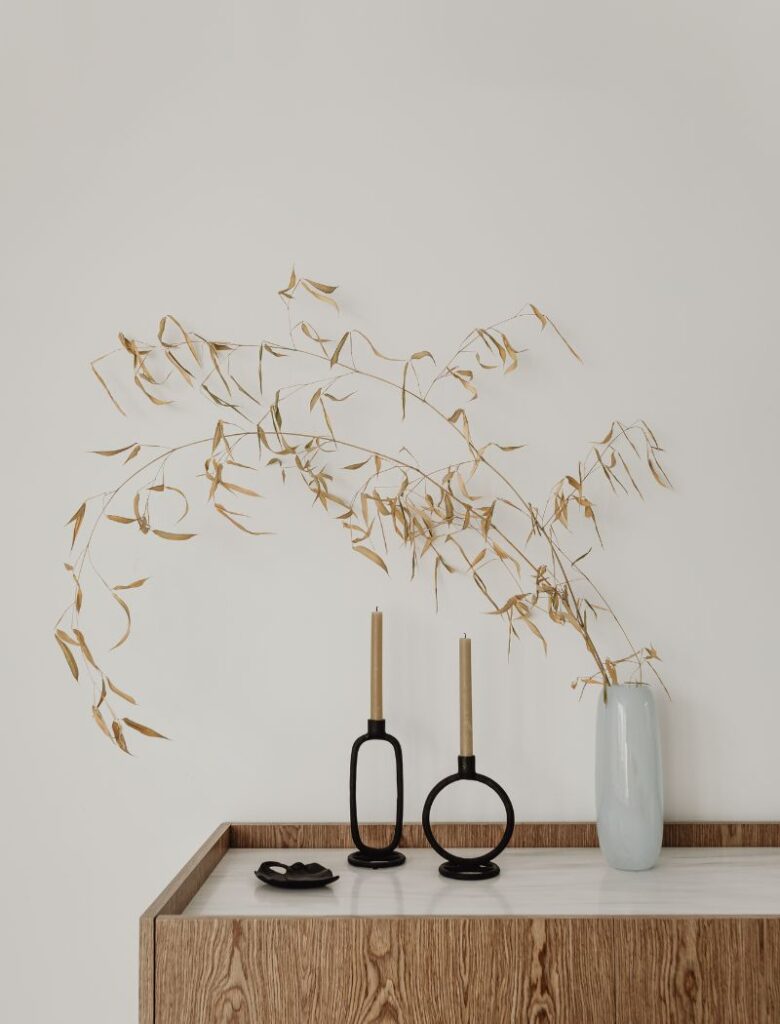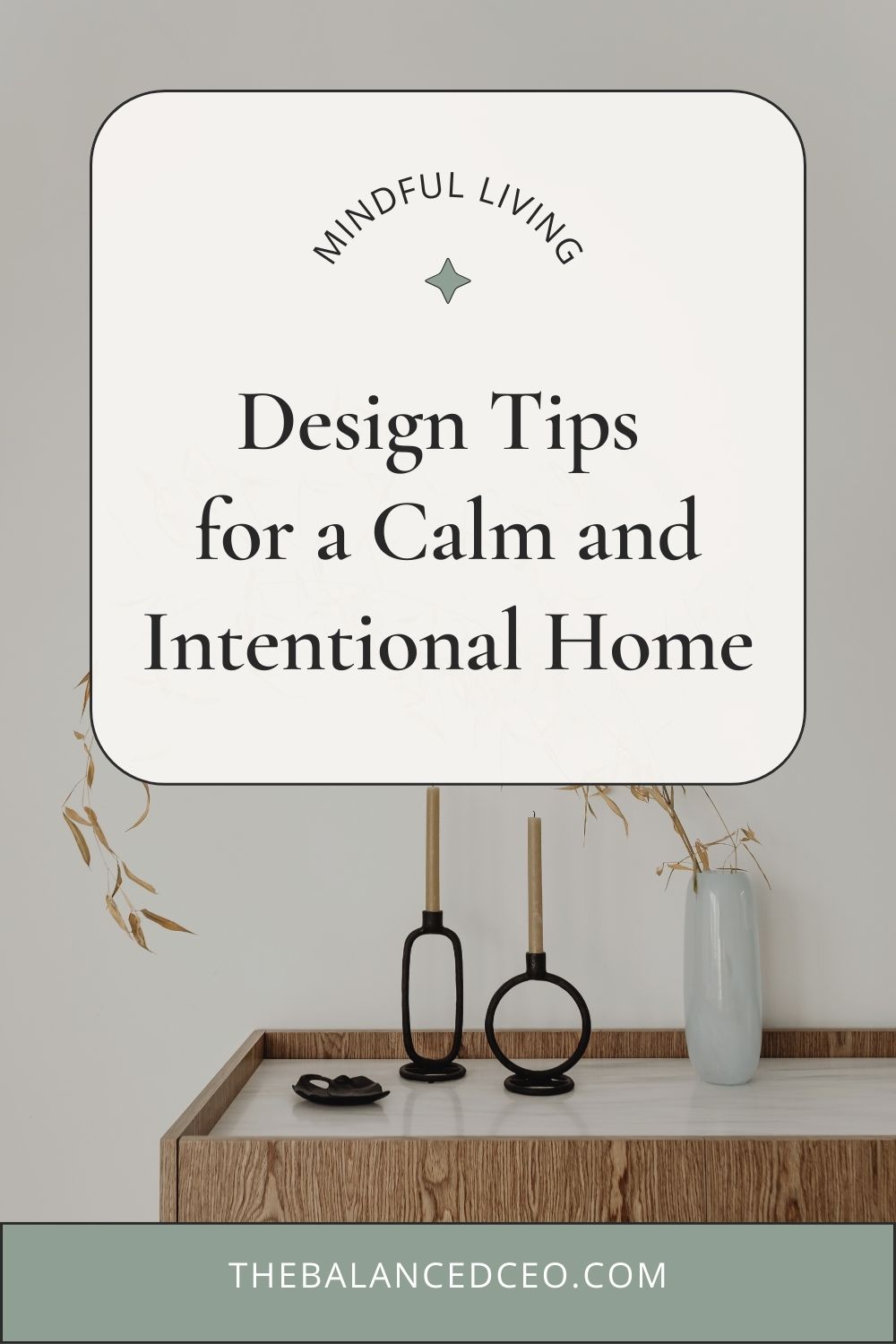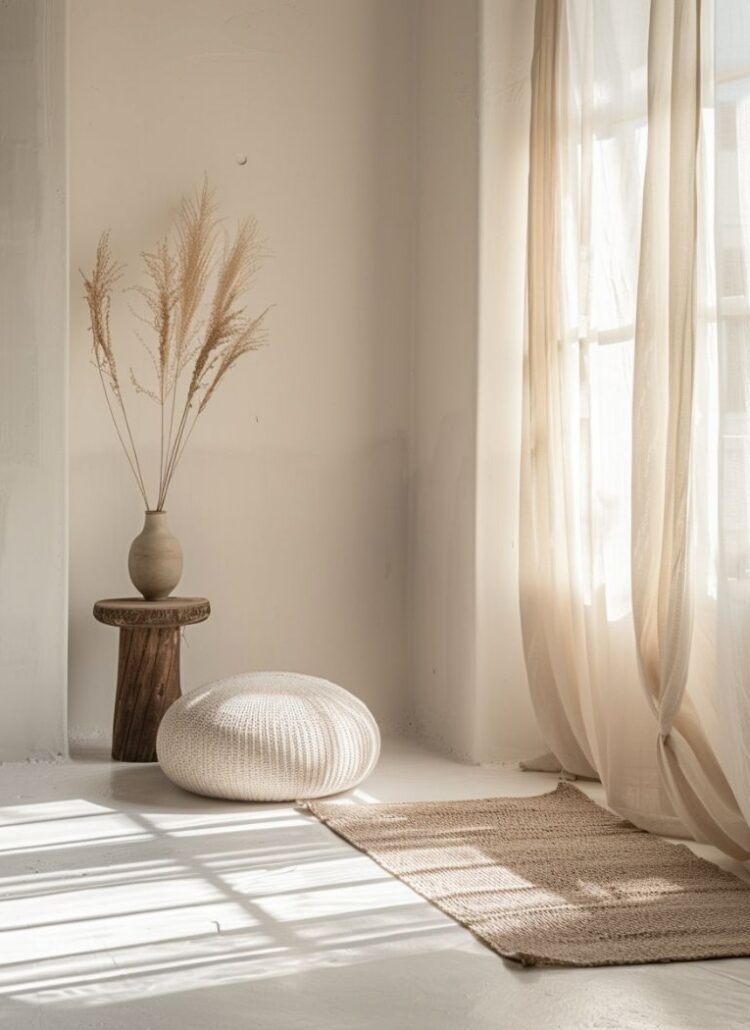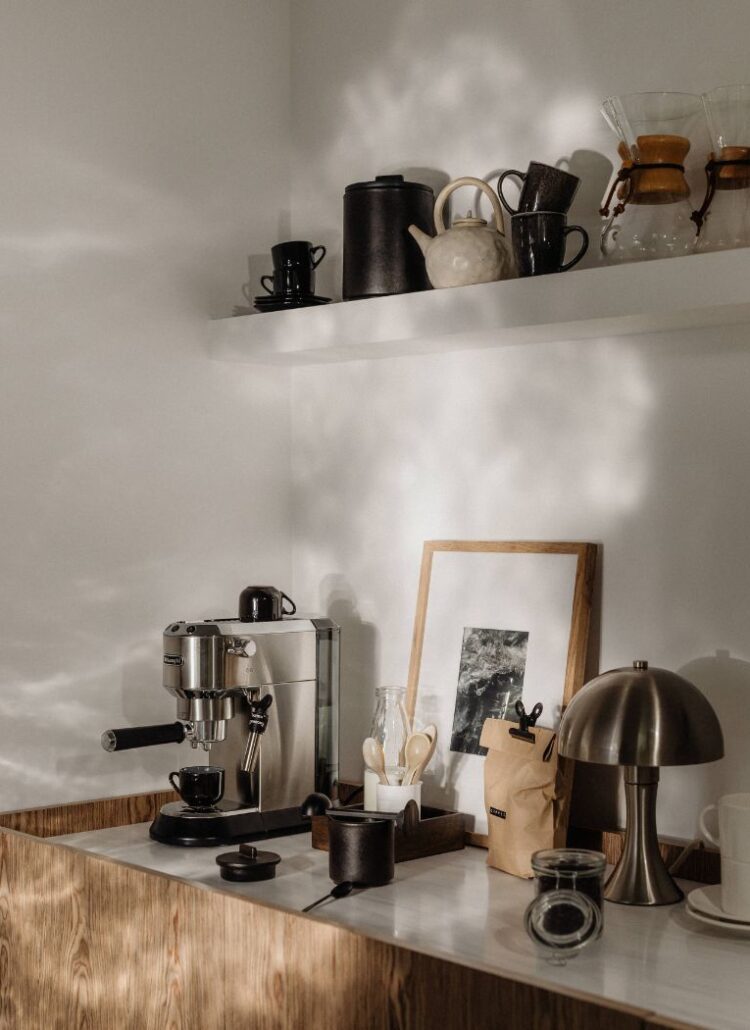This post may contain affiliate links, which means I’ll receive a commission if you purchase through my links, at no extra cost to you. Please read full disclosure for more information.

In today’s fast-paced world, creating a space that promotes calmness and mindfulness has become essential. Our homes are more than just living spaces; they are sanctuaries where we seek peace, recharge, and find inspiration. Designing a home that supports mindful living requires intentional choices in decor, furniture, and layout.
Here are practical tips to help you craft a serene and intentional home that aligns with the principles of mindfulness.
Calming and Intentional Design Tips
1. Start with Decluttering
A cluttered space can create a cluttered mind. Begin your journey to mindful living by removing unnecessary items from your home. Marie Kondo’s method of keeping only what “sparks joy” is a great way to decide what stays and what goes.
• Tip: Start with one room at a time and work your way through your home. Once you’ve decluttered, commit to maintaining the simplicity.
Decluttering isn’t just about physical space—it’s also about emotional well-being. A clean and organized environment can significantly reduce stress and improve focus.
2. Choose a Neutral Palette
Color plays a vital role in creating a calming atmosphere. Neutral tones such as whites, creams, and soft pastels are excellent for promoting tranquility. These shades reflect natural light, making rooms feel open and airy.
• Tip: Add subtle pops of color through accents like throw pillows or artwork to keep the space interesting without overwhelming the senses.
If you want to experiment, consider using soft textures in materials like linen, cotton, or wool to add warmth to your space without compromising the calm aesthetic.
3. Create a Cozy Bathroom Oasis
The bathroom is often overlooked when designing a mindful home, but it’s a space where many of us start and end our days. Enhancing this area with thoughtful decor can set the tone for a peaceful daily routine.
One way to elevate your bathroom’s ambiance is by incorporating bathroom wallpaper with soothing patterns or colors. Choose designs inspired by nature, such as gentle waves, floral prints, or soft geometric patterns, to bring a sense of serenity to the space.
4. Mindful Furniture Selection
Every piece of furniture in your home should have a purpose. Opt for pieces that are both functional and aesthetically pleasing. Avoid overcrowding your space with too many items; instead, focus on quality over quantity.
For example, a simple wooden table or a comfortable chair can add elegance while keeping the space minimal. Look for sustainable or locally made furniture to align with mindfulness values.
5. Incorporate Nature Indoors
Bringing the outdoors in is a powerful way to foster a sense of calm. Plants not only purify the air but also add vibrancy and a connection to nature.
• Tip: Start with low-maintenance plants like succulents, snake plants, or peace lilies if you’re new to gardening.
• Add natural elements such as wooden decor, stones, or woven baskets to enhance the organic feel of your home.
Place plants near windows to maximize their growth and allow natural light to flow into your space, creating a harmonious balance.
6. Design an Intentional Workspace
If you work from home, creating a dedicated and serene workspace is essential for productivity and peace of mind. Avoid setting up your office in high-traffic areas or cluttered corners.
To add a touch of sophistication, consider using elegant office wallpaper that inspires focus and creativity. Choose designs that are simple yet refined, such as soft stripes or delicate botanical prints. A well-designed workspace can make a significant difference in your daily workflow and mental clarity.
7. Focus on Lighting
Lighting can make or break the atmosphere of a room. Natural light is ideal for creating a bright and uplifting space, so maximize it wherever possible. Use sheer curtains to let light in or strategically place mirrors to reflect sunlight throughout the room.
For evenings, use warm, soft lighting to create a cozy environment. Avoid harsh overhead lights and instead opt for floor lamps, table lamps, or candles to set a relaxed mood.
8. Add Personal Touches
Mindful living is also about creating a space that reflects who you are. Personalize your home with items that have meaning—family photos, travel souvenirs, or heirloom pieces. However, avoid overloading shelves or walls to maintain a clean and balanced look.
Curating your home thoughtfully ensures that every item you see brings a sense of happiness or nostalgia, contributing to a positive state of mind.
9. Create Zones for Relaxation
Mindful homes should include spaces dedicated to relaxation. Whether it’s a cozy reading nook, a meditation corner, or a comfortable area to listen to music, having a specific zone for unwinding is essential.
• Tip: Use soft rugs, oversized cushions, or bean bags to make these areas inviting.
• Enhance the ambiance with calming scents like lavender, chamomile, or sandalwood using candles or diffusers.
10. Embrace Minimalist Art
Art can have a profound impact on your home’s vibe. Opt for minimalist art pieces that evoke a sense of calm and inspiration. Abstract designs, soft landscapes, or simple line drawings are excellent choices.
Place art strategically to avoid overwhelming your walls. A single statement piece can often make a stronger impact than multiple smaller ones.
Conclusion
Designing a mindful home is about more than aesthetics—it’s about creating a space that supports peace, focus, and intentionality. By decluttering, choosing calming colors, incorporating nature, and designing functional yet beautiful spaces, you can transform your home into a haven of tranquility.
Every choice you make should align with your values and lifestyle, ensuring that your home feels uniquely yours. Remember, the journey to mindful living begins at home, and with these design tips, you’re well on your way to creating a space that nurtures your mind and soul.





Leave a Reply